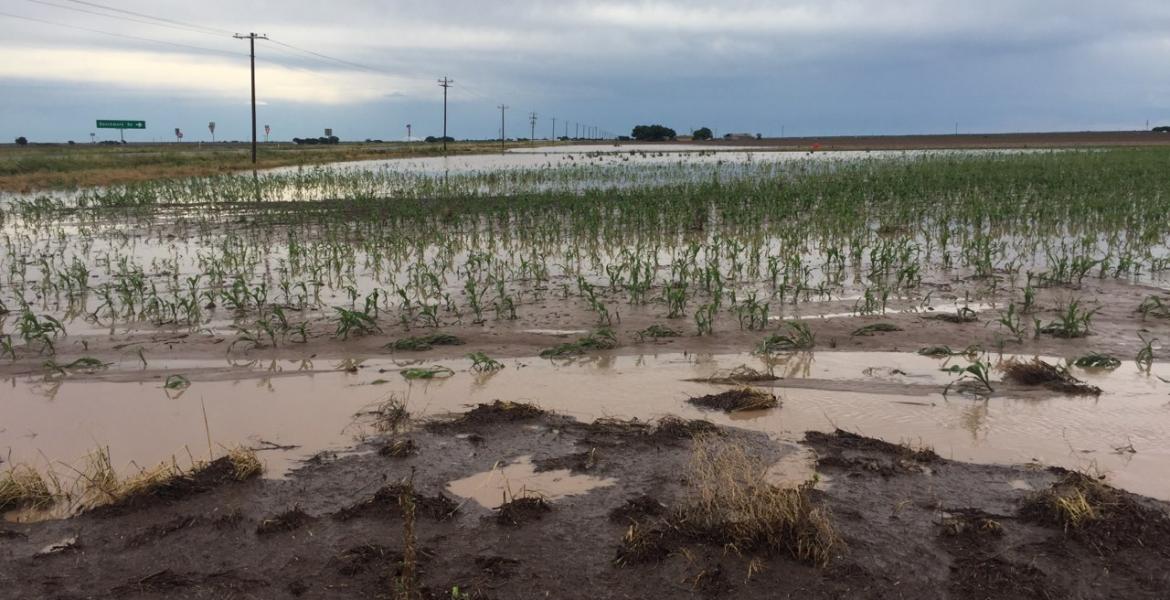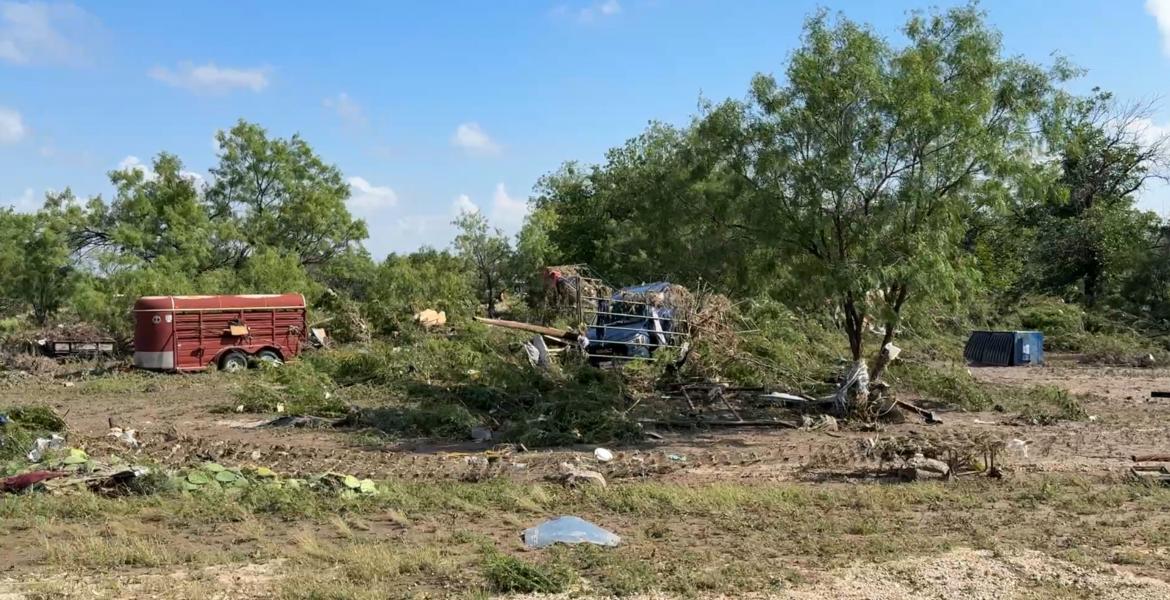Fifteen beds were free in the Tom Green County Jail on Tuesday, when jail officials, county commissioners and a team of architects met to discuss a recently completed needs assessment and long-term planning study conducted to address the state of the overcrowded and outdated county jail.
The architects, Craig Kinney and Kye Franke of Kinney and Franke Architects AIA, as well as Kenny Buyns, AIA of Burns Architecture, have been working on the study for approximately the past five months as the county seeks an answer to the growing jail problem.
“This morning it (the population) was at 434, so I have 15 beds left today,” Sheriff David Jones said. “But what most people don’t realize is that jail classification, there’s not always room for everybody just because you have a bed. The jail commission says at 90 percent they put you on a watch list, and we’ve been at 90 percent most of the time.”
Low, medium and high security classes, male and female, suicidal, medical and mental issues, plus a variety of other factors influence where an inmate is housed once he or she is booked into the jail, where bed space and housing options are frequently severely limited.
Over the past couple of months, Jones said, the population has dropped below 90 percent of capacity, but generally the facility stays near max, requiring the county to come up with measures to determine who needs to remain behind bars on an overnight stay and look at other options, or foot the heavy bill of housing out-of-county.
“Tom Green County, our population historically has been up in the percentage of population in the county jail,” County Judge Steve Floyd said. “We convened a committee for the first time and brought everyone that touches the defendant into a room together…through a series of two to three meetings trying to address our population issues.”
Those meetings, Floyd explained, took place some eight to nine years ago, and the result was staffing and funding centered on evaluating cases and determining who could legally be released on some type of bond or community supervision and still balance the safety of the public.
“The county benefitted greatly from that effort and we were able to stay in compliance for seven or eight years,” Floyd said. “When I came to the position in December ’13, our numbers were back to over, back in the same scenario.”
The committee has been reconvened for the same purpose, and the sheriff and Judge Floyd both have staff that deal strictly with prioritizing jail releases.
“It’s the only thing that’s keeping us in compliance and not spending hundreds of thousands of dollars in outside prison housing at this point in time,” Floyd said. “But we’re getting to the limit of the ability of that to work anymore. We’re down to that entire population needs to be there.”
Over the past two and a half decades, much has changed in the composition of the jail population, Floyd said. While back then the jail was filled with criminals, Floyd estimated that 40-50 percent of the criminals that are booked in also have mental, medical or both conditions officers must contend with.
In addition, the layout and age of the facility has cropped up its own set of problems, as structural issues pose safety concerns and limit future expansion and movement from phase to phase of the buildings limits officer response time.
“The current jail is in very, very bad shape,” architect Kenny Burns said. “The original part of the jail was built in the 1970s, the second addition was in the ‘80s and then in the ‘90s we came along and added on the east end and…a new façade was put on, so what everyone thinks is a new jail is not, it’s mostly the old jail encapsulated in a new façade.
With the newest portion of the jail built some 15 years ago and the original 1970s wings still in use, Burns explained that the jail itself is essentially a dinosaur, a hard-running mish-mashed facility that was built without thought to cohesion.
“It’s not a normal building,” Burns said. “You can take a jail and look at its life expectancy or its lifeline compared to other buildings—say a courthouse or a regular office building—a jail never stops working. So you can figure that the real life of a jail is three to four times its age.”
The majority of the jail is laid out in a linear design, which Burns likened to a schoolhouse with long corridors and pockets of classrooms on either side. Monitoring the cells off the corridors is indirect, as an officer must walk the halls on regular intervals to check on inmates and make sure no trouble arises.
A podular design is favored, which has several cells on two levels with a shared community space in the center. There are currently a few pods in the newest portion of the county jail, all monitored by an officer in a room with a view into each pod. The supervision in the pods is more extensive, as an officer is constantly there supervising the inmates.
“I think the biggest challenge is the setup,” said Lieutenant Beth Holland-Mull, noting that all of the cells are located on the second level. “It takes too long to get there with the elevators. That’s a big challenge right now and we feel like we could be more helpful in a situation if we could react faster, but you only have two ways upstairs: the elevators, which are really slow, or the stairs, which officers fall, get hurt, stuff like that.”
Mull said the majority of complaints from personnel stem from the jail design, which hinders them in their ability to do their jobs as they continually walk the halls on their way to and from checks with little time to spare for other work.
The complaints have stemmed from inmates too, including one that is currently threatening to sue the county after getting in a fight in the jail in which he said officers weren’t able to protect him due to the facility’s design. The complaint brings up another issue the architects are working to address with their design proposals, moving from indirectly to directly supervised cells.
“There’s two different ways to operate a jail,” Burns said. “One is direct supervision, which is where the jailer, the correctional officer, is inside the pod with the inmates. The other is called indirect supervision and it’s where the jailer is outside the pod from the inmates…That’s what you have in your current jail, is a linear, indirect supervision design. It is outdated in its design and operational philosophy.”
Burns said the issues posed by the outdated facility are magnified by the manner in which the jail was built, adding piece by piece over a span of four decades with little regard to what was initially built and how each addition functions together.
“There is no logical link between the three pieces,” Burns said. “They were just all linked by having to cut holes into walls to try to add to the next one, so there’s no real good logical circulation.”
Due to the mish-mash of design styles reflective of each era—the old, linear “backside” of the jail built in the ‘70s and ‘80s, the would-be temporary barracks of the ‘90s that still stand at near capacity and the pods—a horizontal expansion would not only be costly, Burns said, but would further compound the circulation issue of the jail.
In preparing the needs analysis, the architects explored four possibilities including growing out or growing up, building an entirely new facility or building a smaller new facility to house part of the inmates while the others remain in the current facility.
The horizontal expansion was discussed in detail on Tuesday and would require nothing less than moving utility lines, demolishing the oldest portion of the jail to rebuild and relocating MLK to the west side of the sheriff’s office. The project was estimated to cost some $95 million, $11.1 million alone to house inmates out-of-county during demolition and reconstruction of the backside of the jail.
Scenario two centered on upward growth, which would have resulted in a eight to 10-story building in the center of downtown with no windows and built “on stilts” due to the old “lift slab” approach to building when the facility was initially constructed.
In discussing the second scenario during the study, the architects believed the construction costs would far exceed the $75-95 million range of the other options and eliminated it from consideration.
Dropping down $20 million from the first scenario, the third option was to build an entirely new facility on county-owned land off US 277 north of San Angelo near the Roy K. Robb facility.
The new facility would address the circulation needs and allow architects to design in a way that added natural light and direct supervision monitoring, which helps keep the population under control.
In 2014, the Texas Commission on Jail Standards prepared a facility needs analysis and concluded that the county should build a jail with a minimum of 624 beds expandable to 672 beds, the architects said. That minimum number was bumped up to 642 by architects during the study, with a minimum square footage of 255,098.
Building a new jail at a remote site would allow the county to construct a brand-new and modern jail that can be added onto in the future as opposed to completing everything all at once. There are no displacement costs, no demolition and no constraints on design from the existing facility.
Although the third scenario would allow the county to provide all the necessary space and services needed in a new facility, an alternate option, in which the county would build a smaller new facility with room for future expansions, was the favored option in the court on Tuesday.
“In this suggested alternate, we propose the construction of a 227,989 square feet, 546 bed jail facility,” documents from the study report. “While this is smaller than the jail need identified by TCJS, and our building space program and calculation of bed capacity, we believe that this alternate should serve the county for 10-15 years before additional beds would be required.”
With the reduced square footage and lower number of beds, the price tag on the new facility was the lowest of those proposed at $60.4 million. Design and bidding could take up to 15 months before construction could begin, which may take an additional two years.
[[{"fid":"12434","view_mode":"preview","type":"media","attributes":{"alt":"New jail ","class":"media-element file-preview imgbody"}}]]
Above: Drawings for the new Tom Green County Jail. (Contributed, Tom Green County)
The layout centers on a control room, with spoke-like corridors radiating out to the various wings of the facility. The southwest side of the facility (on the plan) would be primarily dedicated to operations, while two female direct supervision pods holding 48 beds each are situated to the north. Northeast of the control center, opposite the pods, is the female Special Housing Unit (SHU), bordered by the male SHU and two male dorms with 56 beds apiece. Four more male pods are on the opposite side of the hall.
“The disadvantages, which are not great, [but include] more travel expense for the movement of inmates to and from the courts,” Burns said. “Now remember, with the new video arraignment system, we can handle a lot of those issues without moving them to the courthouse and only move them down there when they have to make an appearance, so again, one kind of washes out the other, I think.”
At the conclusion of the presentation Tuesday, commissioners received a bound copy of the study nearly as thick as the San Angelo phone book. No decision was made at this week’s meeting, however County Treasurer Dianna Spieker noted that the county is currently very financially secure.
Subscribe to the LIVE! Daily
Required






Comments
Listed By: Doctor Ding-bat
And break the check books out, our County taxes are about to equal those that Carol Bonds bent us over with....... My solution would be take the property that is available and already owned by TGC, build 30 foot high walls around 10 acres of land and set up a tent city for inmates. It works in Arizona and can work here as well.... Yeah it may come with intolerable heat and cold depending upon the season but might would also be a great deterrent in making a criminal not wanting to commit a crime to be there in the first place.
- Log in or register to post comments
PermalinkPost a comment to this article here: